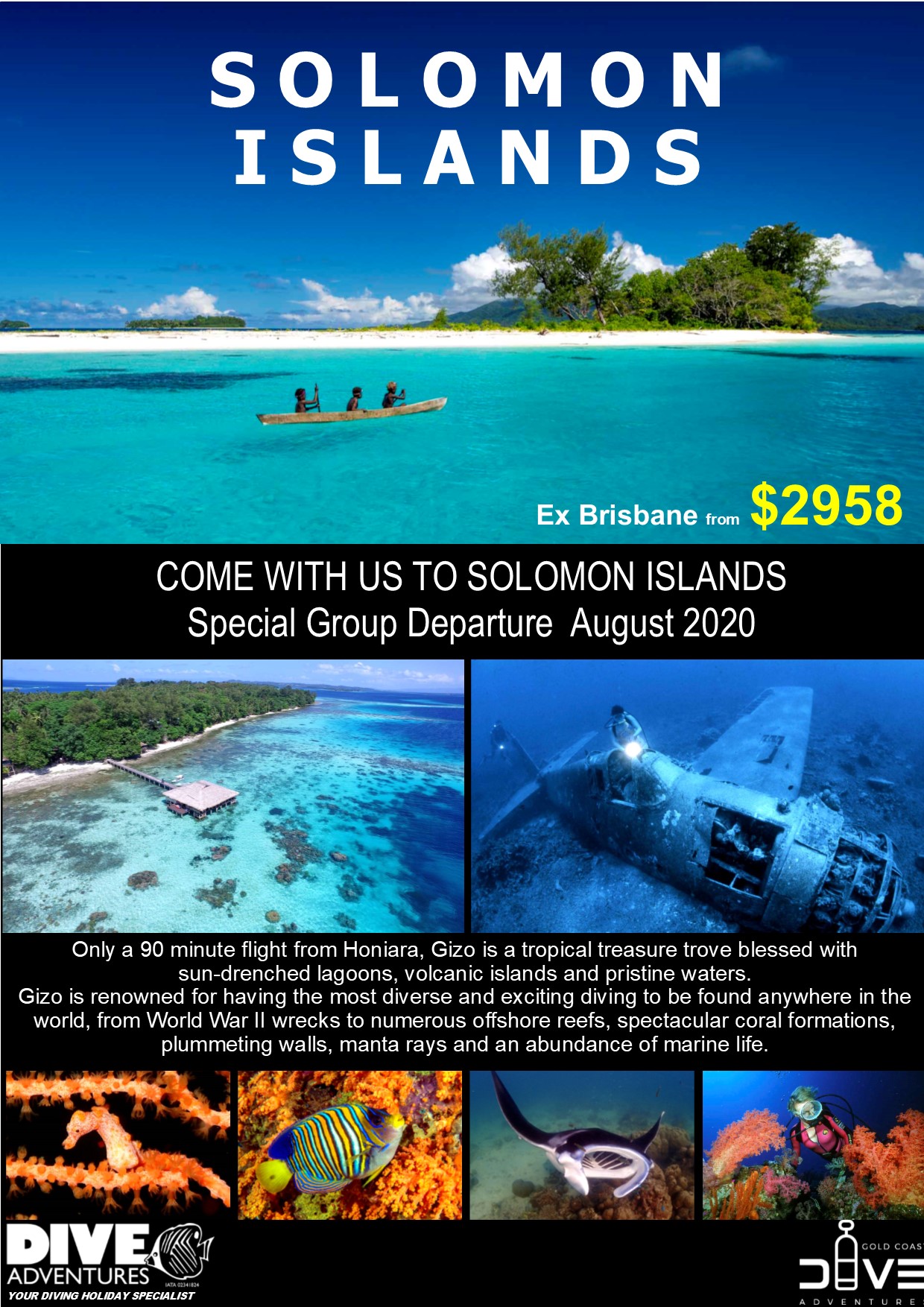Diving the Solomon Islands
Far off the north-east coast of Australia lie the Solomon Islands, a sovereign state made up of six major islands and an additional 900 small atolls and land-masses. Part of the British Commonwealth, the Solomon Islands were the scene of fierce fighting during World War II. The Battle of Guadalcanal was one of the bloodiest conflicts of the entire war, and resulted in various shipwrecks and military artefacts to litter the ocean floor. Aside from remnants of war, the gin-clear waters that surround the Solomon Islands boast healthy reefs, muck diving and caves and caverns aplenty.
Gizo
Capital of the Western Province of the Solomon Islands, Gizo’s economy is primarily geared around the diving industry. Notorious as the location where former President John F Kennedy’s patrol boat was destroyed and sunk, Gizo is one of the most visited and dived locations of the Solomon’s.
With water temperatures ranging from 27-31 Celsius, the diving is pleasant throughout the year. However, between the months of January and April monsoon occurs and bring strong winds and rain. The monsoons often cause turbulent waters and occasionally poorer visibility than during the dry season.
Toa Maru
Ranked by Diver Magazine as one of the top 20 wreck dives in the world, Toa Maru was a Japanese transport ship that was sunk off the coast of Gizo during WWII. 140 metres in length, the massive ship is well within recreational dive limits, the deepest part only 38 metres deep. Interesting artefacts that can be seen include bombs, ammunitions, saki bottles and even a tank!
Diving through the interior of the wreck is fascinating, be sure to explore the crew quarters and dining area. Outside the wreck, turtles, rays and even the odd shark are frequent visitors.
Grumman Hellcat Wreck
One of the most popular sites off Gizo is that of the Grumman F6F Hellcat. In a shallow lagoon with perfect light, the fighter rests at a depth of 9 metres. Diving or even snorkelling this wreck is easy; unusual in an area where most wrecks are in depths beyond 50 metres. In perfect, intact condition, the famed fighter plane has corals growing from every conceivable part of metalwork, and marine fauna is abundant.
Leru Cut
A visually stunning dive, the Leru Cut is a recurring favourite for tourists and guides alike. A canyon that carves 100 metres into Leru Island, shards of light pierce the clear water from the jungle canopy above. Divers follow the sandy bottom until the canyon’s end where you can ascent above the water and hear the sound of birds in the jungle. Leru Cut is particularly popular with wide-angle photographers who use the natural light to take breath-taking images. Outside the cut there is a deep wall that is home to numerous native pacific marine flora and fauna.
Twin Tunnels
A dive for the advanced divers among your group, the Twin Tunnels are two giant lava tubes brimming with fans, coral and fish species. Swimming through the tunnels, one can experience deeper depths (40 metres), yet allows the opportunity to dive along a deep reef wall where larger species including tuna, trevally and even sharks have been seen.
This is a great dive due to the fact that the two depths offer uniquely parralled life. While one may encounter moray eels, pygmy seahorses and cuttlefish on the deep wall, the shallows are home to more colourful coral and the species that dwell there.
Devil’s Highway
A feeding site notorious for resident manta rays, Devil’s Highway is a high octane dive. Cling to the shallow reef as the current surges, and marvel as pelagic species pass in your view. Sharks, rays, and other pelagic giants are sure to show. With a maximum depth of only 12 metres, Devil’s Highway is one of the best dives in Maravagi Island waters.
White Beach
While the name of the site is misleading due to the fact there is no white beach, this is a macro lover’s paradise. When the American troops departed from their base during World War II, they discarded many trucks, artillery and other military objects into the waters.
Decades later, jawfish, pipefish, harlequin fish and perhaps the most beautiful nudibranch, Nembrotha kubaryana can be seen. Cloaked by mangrove swamps, there are numerous juvenile fish species that use the shadowed waters and tree roots for protection.
OUR SOLOMON ISLAND DIVE ADVENTURE
8 days / 7 nights ex Brisbane



